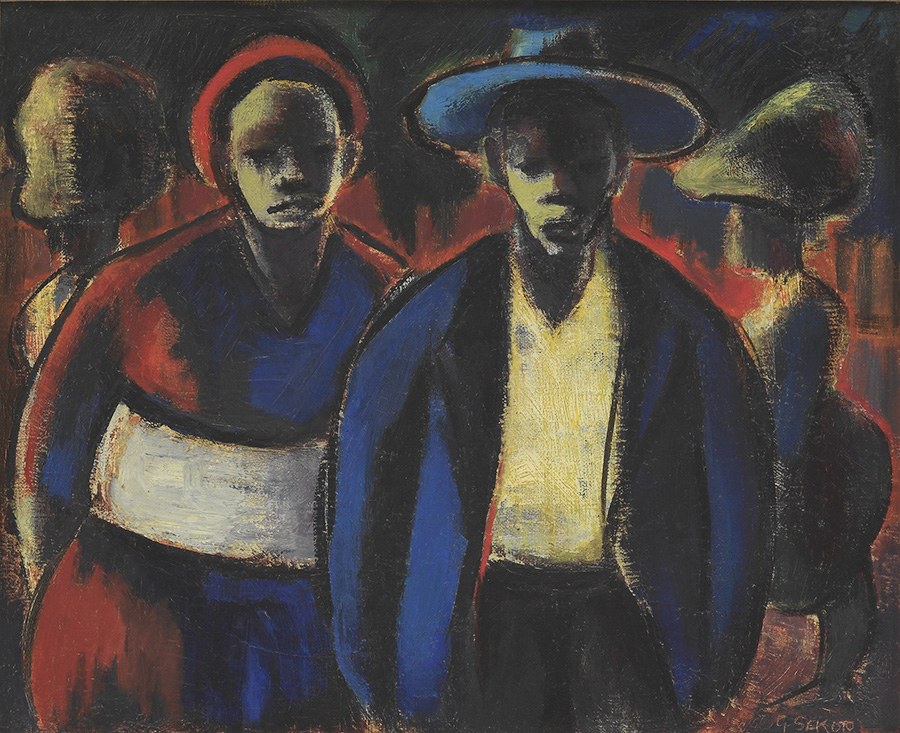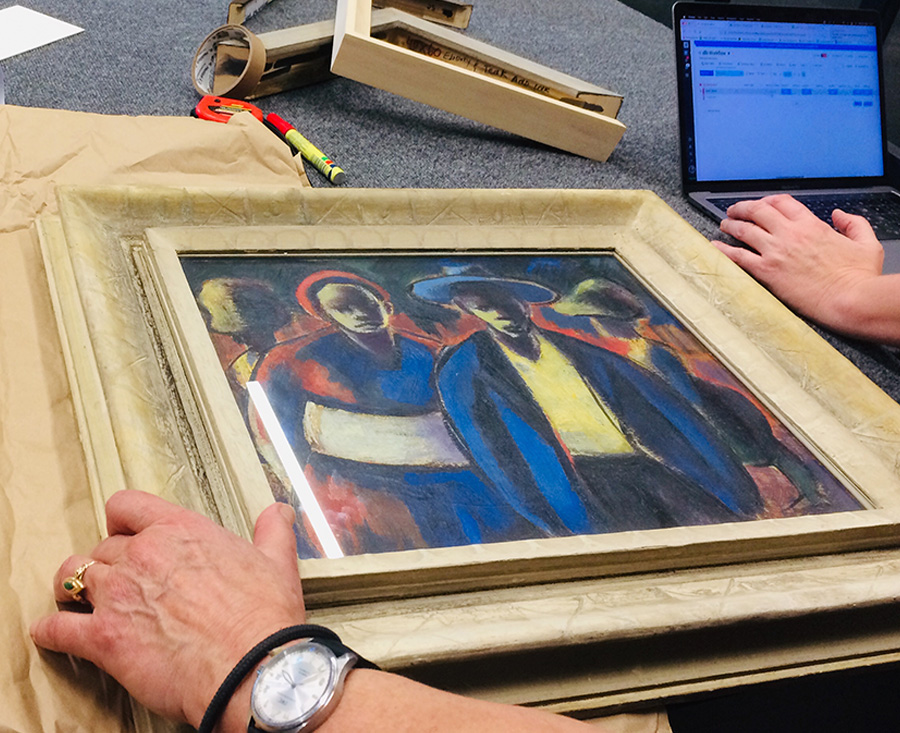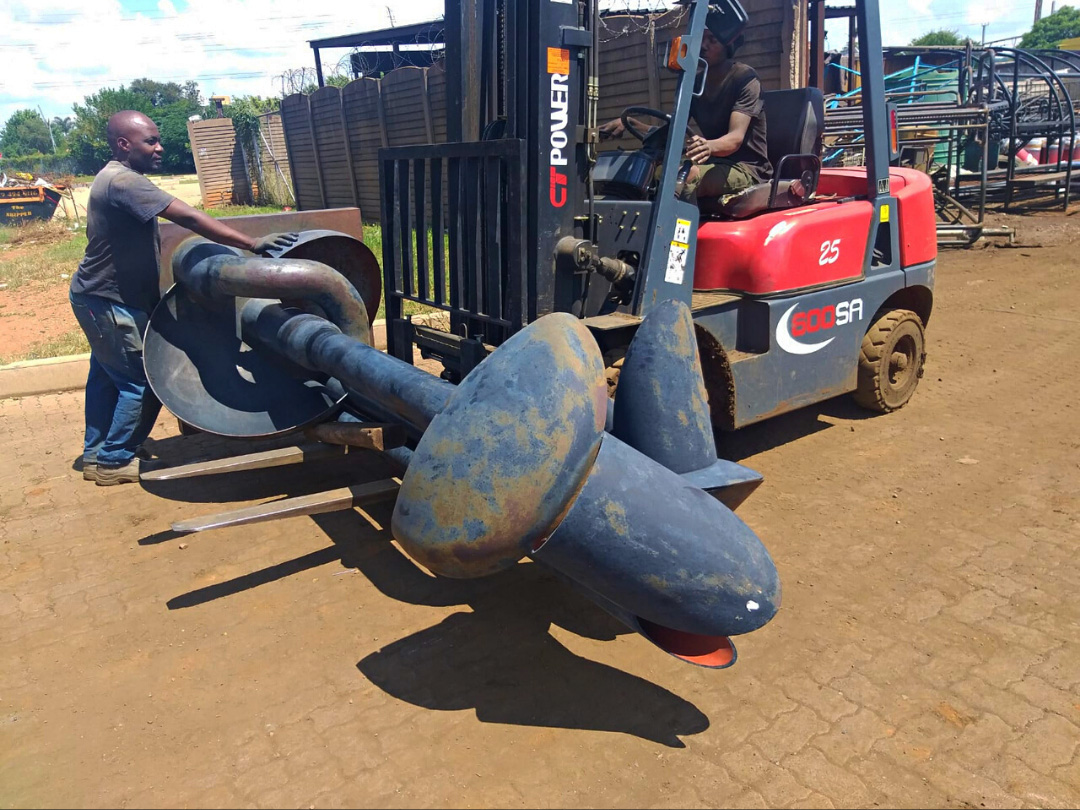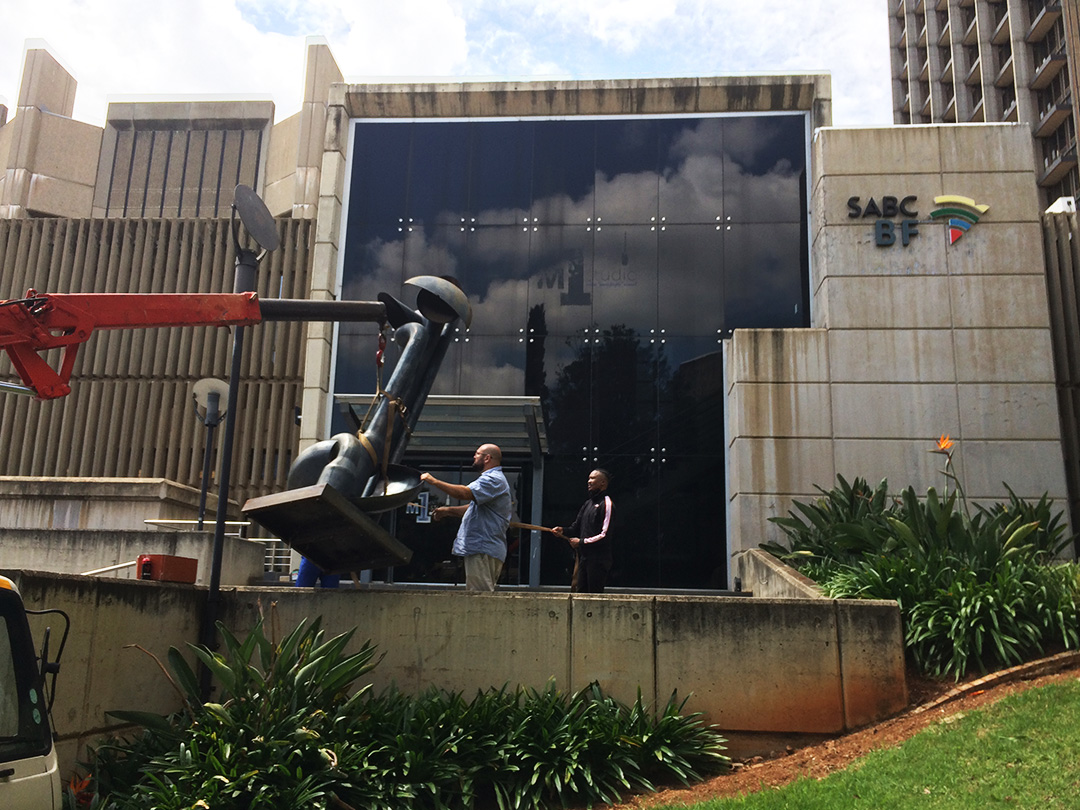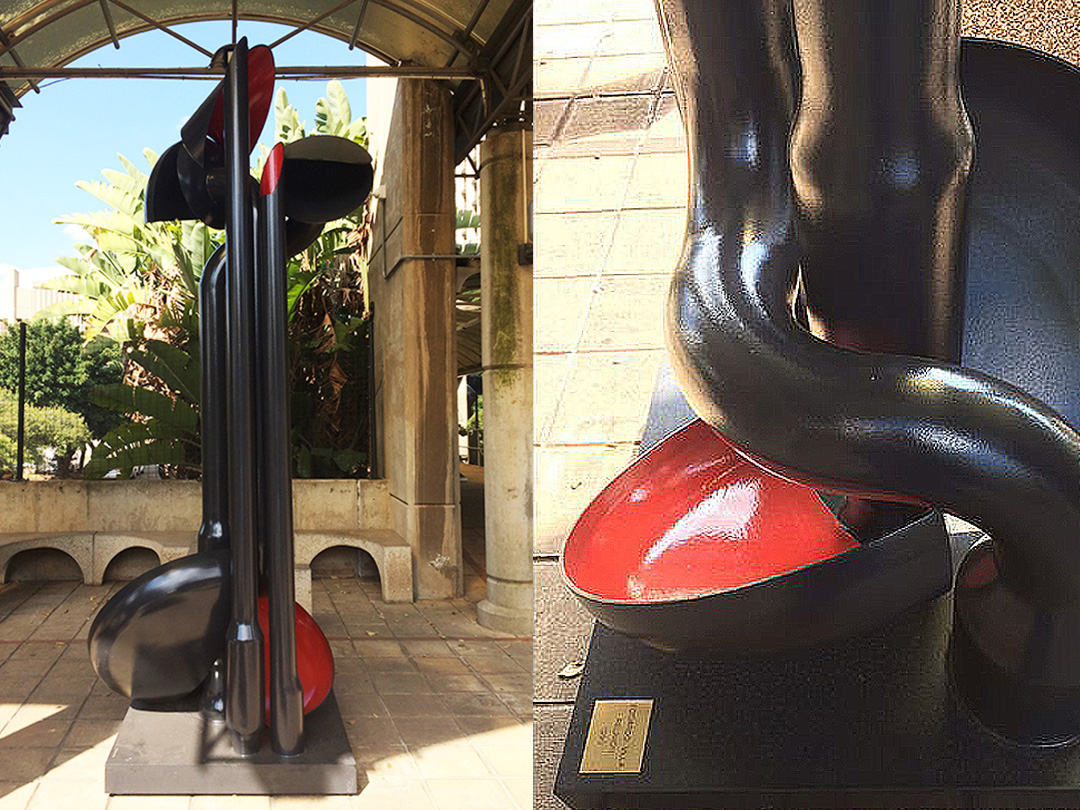RESTORATION AND CARE
In 2022, the SABC Art Collection embarked on a project of restoration. This major three-year restoration and conservation project involves the repair and preservation of hundreds of precious South African artworks, which are valuable not just in investment terms but as cultural artefacts that record and express a huge diversity of experiences in South Africa’s turbulent history.
‘There is something miraculous about the timing of this project,’ says curator Koulla Xinisteris. ‘It took a long time to assemble the team of specialists needed to repair the various artworks, because there are so few skilled restorers in the country. We are very fortunate to be working with some of the most qualified, professional and efficient restorers in South Africa.’
The artworks that needed to be restored included sculptures, paintings and works on paper, so the team included several specialists, including a painting conservator, photographic and printing experts, a bronze foundry and a wood restorer. ‘Their attention to detail is remarkable’, says Xinisteris.
The numerous artworks included in Phase One of this ongoing project include works by esteemed and much-loved artists, including Dumile Feni, Tracey Rose, Ezrom Legae, William Kentridge, Johannes Phokela, Jo Ractliffe, Sam Nhlengethwa, John Muafangejo, Judith Mason, Cyprian Shilakoe, Moshekwa Langa, Lisa Brice, Robert Hodgins, Diane Victor and Walter Battiss.
Husband and Wife, a bold and tender oil painting of a young couple by artist and musician Gerard Sekoto (1913–1993), had its surface gently cleaned and its shimmering metallic frame repaired as part of a three-year restoration and conservation project by the SABC Art Collection. Sekoto, who went into self-imposed exile in Paris in 1947, is recognised as a South African pioneer of urban Black art, modernism and social realism.
Special care was taken in making the wide-ranging technical choices that would not only preserve the works, but give them new life and presence. The bold new black frame chosen for David Koloane’s mixed-media collage work, Passage, ‘grounds the earthy collaged textures that bleed colour, and cradles the experience of horror,’ as Xinisteris puts it.
‘Before, it was exposed to the elements; now, it is framed in a micro-climate box with Perspex that is lightweight and ensures longevity,’ says painting conservator Angela Zehnder.
Husband and Wife, a bold and tender painting of a young couple by Gerard Sekoto, had its surface gently cleaned and its shimmering metallic frame repaired. ‘Non-reflective museum glass was chosen for this work so that viewers can see it perfectly without the interference of reflections,’ says Xinisteris.
Like our bodies, artworks suffer from wear and tear as they age. Repairing the damage and making sure that the works survive in fine form into the future is a major aspect of a curator’s work. The word ‘curator’ derives from the Latin word ‘curare’ which means ‘cure’—closely related to the ethics of healing and care-taking, in this case healing and care-taking in the cultural context.
‘There is an emotional side to restoring work that is representative of our fractured history,’ says Xinisteris. ‘For me, it is like restoring aspects of our humanity to ourselves. Seeing the van arriving and chosen artworks being loaded into it by our team of expert restorers was like seeing a team of medics arriving in an ambulance to take them to hospital for treatment.’
Although many of the artworks were repaired on site at the SABC in Auckland Park, some needed to be transported to the premises of the various specialists. ‘Considering that this is such a major national collection, this was a huge responsibility, which involved a lot of forms, signatures and administration to comply with the necessary security measures,’ explains Zehnder. ‘But working closely with the team and with such a passionate curator ensured that everything went very smoothly.’
Reunion, a sculpture by Italian-born South African artist Edoardo Villa (1915 – 2011) that explores the space between abstraction and figuration, was restored as part of a three-year restoration and conservation project by the SABC Art Collection. In its new open-air position at the Henley Road entrance to the SABC, the sculpture can now be fully appreciated by pavement passers-by and visitors to the broadcaster. Look out for it next time you’re in Auckland Park.
The project involved the restoration of artworks created by both living and ancestor artists. Two sculptures by the late Jackson Hlungwani received the care they needed. The wood of these two artworks – Bird and God with Adam and Eve – was given special treatment. Both works were unsteady on their bases and have now been gently secured. ‘Jackson Hlungwani had his trouser-leg rolled up for years and years because of an awful wound on his leg,’ says Xinisteris. ‘With this in mind, I find the mending of “the foot” of his sculptures very moving.’
Zehnder concurs, quipping that ‘god is feeling better’.
When consulted on the restoration of their artworks, several artists eagerly participated in the dialogue, devoting time and care to the project. Hentie van der Merwe assisted the SABC Art team and Bie Venter at David Lewis Brown with the selection of the elegant plinths and Perspex vitrines in which Messenger and Unicorn, his two striking mask artworks, are now showcased. The one mask, Messenger, is cleverly attached to a backing that will continue to morph and change with time in its Perspex box, living on even though the play by Jane Taylor for which it was initially conceived was never realised.
Similarly, Johan Thom (Outpost) and Abrie Fourie (Pile of Bikes and End of the World) showed great devotion to the restoration and reframing of their photographic artworks.
‘Artworks are pieces of our humanity. Turning up for our artwork, showing ongoing respect for what has been and what has been suffered, is a kind of honouring,’ says Xinisteris. ‘For me, it means we’re living in a world in which we are respecting one another.’


